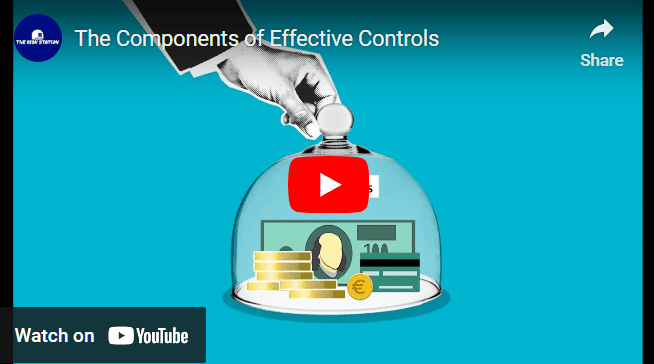Organisational Controls are a fundamental aspect of organisational management, serving as vital tools for navigating the complexities of modern business environments. They encompass actions taken by management, the board, or other stakeholders to manage risks and increase the likelihood of achieving set objectives and goals. Controls also play a significant role in maximising opportunities, offering a structured approach that guides your organisation toward success while minimising potential hazards.
Think of controls as a strategic roadmap that directs your business toward their desired outcomes while helping them avoid potential pitfalls along the way. They are not a one-size-fits-all solution, as each control must be tailored to the unique needs and circumstances of the business or project at hand. This customisation ensures that controls effectively address specific risks and challenges, enhancing overall performance and resilience. Refer to The Risk Station control tools to find tailored controls for each risk typology.
The purpose of organisational controls extends beyond risk management; it also includes the proactive pursuit of opportunities. By implementing robust controls, your business can mitigate these risks and maintain smooth, efficient operations. At the same time, well-designed organisational controls can empower your organisation to seize emerging opportunities, driving innovation and sustainable growth.
The Attributes of Controls
Organisational controls have six key attributes that contribute to their overall effectiveness and implementation:
- What: The specific action or measure being taken.
- Who: The individuals or parties responsible for implementing and overseeing the control.
- When: The timing of the control, whether it’s continuous or occurs at specific intervals.
- Why: The reason or rationale behind the control, typically tied to risk management or goal achievement.
- How: The method or process of implementing the control.
- Where: The area or department where the control is in effect.
What: The Specific Action or Measure Being Taken
Organisational controls are defined by the specific actions or measures they encompass. This can involve processes such as transaction monitoring, verification steps, or quality assurance checks. Each control is designed with a precise purpose in mind to address a particular risk or objective. When controls are clear and actionable, they can be effectively implemented and monitored, providing an essential foundation for overall risk management.
Who: The Individuals or Parties Responsible for Implementation and Oversight
The effectiveness of organisational controls depends on the people who implement and oversee them. This includes a range of stakeholders, from executives to frontline employees. Clear accountability and defined roles ensure that everyone understands their responsibilities in maintaining and executing the controls. Regular training and updates can help maintain awareness and competence, reinforcing the effectiveness of these measures.
When: The Timing of the Control
Timing is a crucial aspect of organisational controls, as they may be continuous or scheduled at specific intervals. Continuous controls provide ongoing oversight, such as real-time transaction monitoring, while periodic controls might include monthly financial reviews or quarterly performance evaluations. Appropriate timing ensures that controls are relevant and can address emerging issues in a timely manner.
Why: The Reason or Rationale Behind
The rationale for implementing organisational controls typically revolves around risk management and achieving specific goals. Controls help safeguard against financial loss, compliance issues, and reputational damage. They also provide a structured approach to seize opportunities, driving efficiency and facilitating growth. Understanding the “why” behind each control helps align them with an organisation’s broader strategic objectives.
How: The Method or Process of Implemention
Organisational ontrols are implemented through a variety of methods, such as standard operating procedures, software tools, and employee training. Systematic processes help ensure consistency and reliability in control execution. Regular audits and assessments can help verify that controls are functioning as intended and identify areas for improvement. Clear documentation and standardisation support smooth implementation and adherence to controls across the organisation.
Where: The Area or Department Where the Control is in Effect
Organisational ontrols can be applied across all areas of your organisation, including finance, operations, human resources, and compliance. Each department may require specific controls tailored to its unique risks and objectives. For example, financial controls focus on accuracy and integrity in reporting, while operational controls emphasise efficiency and quality. By applying controls strategically across different areas, your organisation should create a cohesive framework that supports overall risk management and success.
Types of Controls
| Type of Control | Description |
| Detective Controls | Detective controls focus on identifying and catching discrepancies or errors that may have occurred. These controls often involve reviewing and inspecting processes to find any irregularities. |
| Preventative Controls | Preventative controls are designed to stop issues before they happen, serving as protective measures against potential risks. By restricting access or creating barriers, these controls minimise the chance of errors or unauthorised actions. |
| Corrective Controls | Corrective controls address errors that have been detected by detective controls or have slipped through preventative controls. They involve steps to correct errors and prevent their recurrence. |
| Directive Controls | Directive controls provide clear guidelines, rules, and policies for behaviour and decision-making within your organisation. They ensure that individuals’ actions align with the organisation’s objectives. |
In conclusion, organisational controls are vital in managing risk and achieving goals within organisations. They are actions taken to manage risk and increase the likelihood of achieving established objectives and goals, while also maximising opportunities. Controls possess unique attributes such as what, who, when, why, how, and where, which play critical roles in their effectiveness and implementation. By understanding these attributes and the types of controls, organisations can effectively manage risk and achieve their objectives. However, it’s important to note that implementing controls is not a one-size-fits-all process. Organisations need to consider their unique risks, objectives, and operational context when designing and implementing controls. A well-implemented control system is a key component in managing risk and achieving goals.






